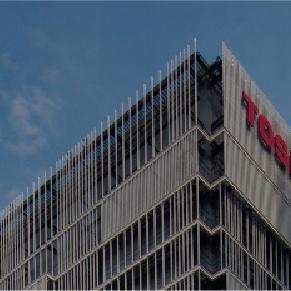Completion of Renewable Energy Aggregation Demonstration in FY2021
- Confirmation of Reduction Effect of Imbalance by Bundling Large Amount of Energy Resources -
- NEWS RELEASE
- Renewable Energy
- VPP
- R & D / Technology
March 29, 2022
Next Kraftwerke Toshiba Corporation
Toshiba Energy Systems & Solutions Corporation
Next Kraftwerke Toshiba Corporation (TNK) and Toshiba Energy Systems & Solutions Corporation (Toshiba ESS), with TNK as the consortium leader, were accepted as companies for heading a demonstration project (*1) publicly solicited by the Ministry of Economy, Trade and Industry (METI), and finished a demonstration experiment with the participation of all consortium members from December 2021 to January 2022.
Through the project, TNK and Toshiba ESS succeeded with several achievements, reducing imbalance by aggregating multiple power generation assets. With these achievements, TNK and Toshiba ESS are pleased to announce that they will launch renewable energy aggregation services from this spring.
The consortium (*2), which is composed of 17 renewable energy aggregators and 11 companies of demonstrating collaborators, is aiming at building a stable and efficient electric system with distributed energy resources (hereinafter “DER”) through the demonstration of technologies; for example, power generation forecasts of renewable energy resources, such as solar and wind power systems, and controlling DER, such as storage batteries.
During the project, several types of renewable generation assets (*3) were used, including solar and wind power generation systems (10 TSO (*4) areas; 1 GW in total) and storage batteries owned by the consortium members. Each aggregator formed a balancing group with renewable generation assets in each area, and evaluated the accuracy of power generation forecasting, imbalance avoidance, and profitability. The consortium formed large balancing groups with all assets provided by all consortium members and performed the same evaluations as the aggregators.
In regard to the evaluation of the forecast accuracy, the consortium evaluated five forecast models, including Next Kraftwerke’s. The consortium confirmed that aggregating multiple renewable generation assets reduces prediction errors because of the smoothing effect. As a result, the imbalance rate (*5) was lowered to about 2 to 4% (*6), from about 4 to 8% (*6), which is the imbalance rate of a single solar power generation asset. Moreover, the imbalance rate was lowered to about 1.8% (*7) in the best case, which used storage batteries and intra-day market trading. The project helped the consortium to clarify technical challenges, such as the forecasting of wind power generation and solar power generation with snow accumulation.
In the evaluation of profitability, we have confirmed that income will be increased by creating a battery storage operation plan to charge batteries when the market price is low and discharge (sell) batteries when the market price is high, based on the results of power generation forecasts and market price forecasts.
In these demonstrations, we used a system developed by Toshiba ESS and Next Kraftwerke which enables us to show the forecasts and results of the power generation on displays (Fig. 1). Furthermore, it is possible to confirm bid plans which are made for each area based on the power generation forecasts, and it is also possible to bid on energy trading markets (Fig. 2).
The consortium formed four working groups and performed a number of studies, such as studies for insurance products for renewable energy aggregators, identify issues about forecasts of power generation, studies of cyber security issues in renewable energy aggregation systems, and studies of use cases about collaborations between power generation balancing groups and demand balancing groups.
Furthermore, Next Kraftwerke organized a four-day workshop where we could share the knowledge about electricity trading markets in Europe, and had active discussions to compare the European and Japanese electricity trading markets.
Hideki Shingai, CEO of TNK and the marketing executive of the renewable energy business unit at Toshiba ESS, commented on this project, “TNK and Toshiba ESS are going to develop technologies, such as power generation forecasts and resource control, to solve the issues which were revealed during these demonstrations. TNK and Toshiba ESS are going to contribute to achieving stable and effective electric power systems which utilize renewable energy.”
(*1) The official name of the project is “FY2021 Subsidy for Demonstration Project for Establishing Next-Generation Technologies Using Distributed Energy Resources such as Storage Batteries (Renewable Energy Aggregation Demonstration Project within the Renewable Energy Generation Aggregation Technology Demonstration Project).”
(*2) Consortium members:
Consortium leader
・Next Kraftwerke Toshiba Corporation
List of the 17 Renewable Energy Aggregator Companies
・Urban Energy Corporation
・West Holdings Corporation
・ENEOS Corporation
・The Kansai Electric Power Co., Inc.
・Kyushu Electric Power Co., Inc.
・Cosmo Eco Power Co., Ltd.
・Japan Renewable Energy Corporation
・The Chugoku Electric Power Co., Inc.
・TEPCO Energy Partner, Inc.
・Tohoku Electric Power Co., Inc.
・Nippon Koei Co., Ltd.
・NEC Corporation
・Hokuriku Electric Power Company
・Hokkaido Electric Power Co., Inc.
・Eurus Energy Holdings Corporation
・Eurus Green Energy Corporation
・Toshiba Energy Systems & Solutions Corporation
List of the 11 Demonstrating Collaborator Companies
・Idemitsu Kosan Co., Ltd.
・Energia Solution & Service Co.
・Energia Solution & Service Co.
・EFFICIENT, Inc.
・Kanden Energy Solution Co., Inc.
・JRE Trading Corporation
・TOKYU LAND CORPORATION
・TOYOTA TSUSHO CORPORATION
・Japan Weather Association
・First Solar Japan G.K.
・Mitsui Sumitomo Insurance Co., Ltd.
・Toshiba Energy Systems & Solutions Corporation
(*3) Solar power, wind power, biogas, biomass, and micro hydropower
(*4) TSO: Transmission System Operator
(*5) Imbalance rate: Absolute value of the difference between the planned power generation value and the actual power generation amount divided by power generation facility capacity
(*6) Rounded down after the decimal point
(*7) Rounded down after the second decimal point
(*8) All text in the actual system screens is written in Japanese
Information in the News Release, including product prices and specifications, content of services and contact information, is current on the date of the News Release , but is subject to change without prior notice.



